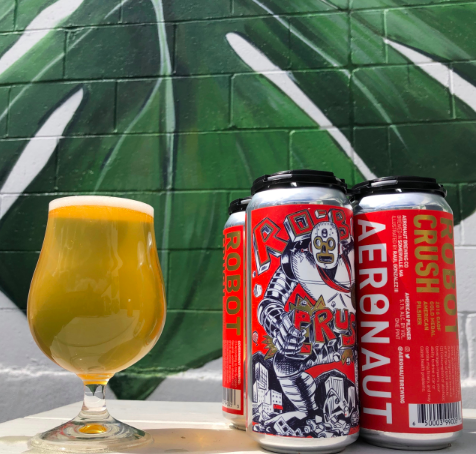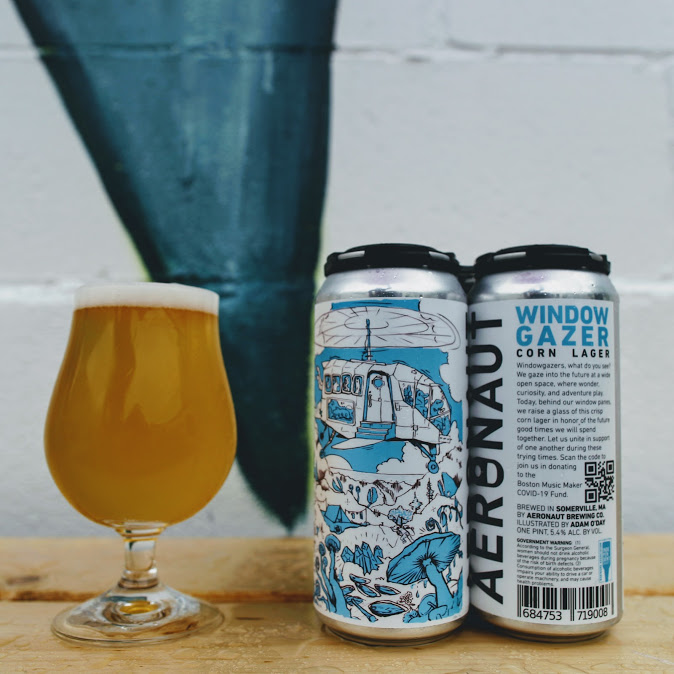By Mark Bowers
The history of beer itself is nearly analogous with the history of “ale.” There is archaeological evidence of beer-making from as long ago as about 7,000 years with some evidence suggesting that it could be as long ago as nearly 14,000 years. These beers were almost certainly ales. Lagers did not arrive on the scene until thousands of years later–most likely in the 16th century. While lagers arose relatively recently in the practice of beer brewing, they have become the dominant beer type throughout the world and are likely to remain that way for a long time to come. If current trends continue it is likely that up to 95% of beer brewed worldwide will be lager.
But let’s take a step back: What is a lager and how does it differ from an ale? The short answer is that ales are fermented with an ale yeast (typically Saccharomyces Cerevisiae), whereas lagers are fermented with a lager yeast (Saccharomyces Pastorianus). Although the longer answer is more complex and detailed it is quite fascinating and helps explain why lagers are so popular today.
Setting the Stage for Lager
Beer brewing, like most technological endeavors, took place in fits and starts throughout civilization. By the time the Middle Ages rolled around beer brewing had mostly left the Middle East where it started and had gained a strong foothold in Europe. If we were to travel through time most of us would recognize their fermented beverage as something akin to what we now know as “beer.”
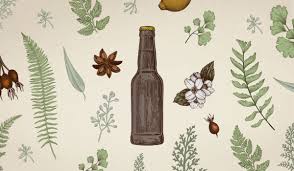
Hops during this period gradually pulled ahead of the gruit style (an herb mixture) that was added to beer to cut or balance the sweetness of the malt. Significantly, hops also helped to preserve beer compared to the gruit style. This was important because after the Middle Ages the rise of the Renaissance saw a big increase in trade throughout Europe ushering a period marked by merchants, guilds, and artisans–not to mention technological advancements and a rise in the standard of living. Summarily, this was the start of commercial based societies. Shipping beer from place to place required a stable product that would last long enough to be consumed after transport.
Beer brewing at this time was beginning to become big business. Brewing was leaving households and farms where it was just one part of making a living to become stand alone profitable commercial enterprises. As a result quality became an issue that brewers constantly struggled with–especially in the summer when beers often became sour or had other defects that we now associate with spoilage from microorganisms. Folks developed methods to cover up the off flavors with all kinds of flavorful and often unhealthy additives, including tree bark, poisonous mushrooms, soot, chalk, ashes, and chicken blood to name just a few!
Because of health issues associated with bad beer (coupled with customers’ desires for a good tasting quality product), rulers began to take notice. As a result they issued edicts and laws to regulate brewers and their beer–after all, these rulers were making significant tax revenue from the sale of beer.
Nowhere is more famous for beer purity laws than Germany–specifically Bavaria. Many have probably heard of the Reinheitsgebot, the 1516 beer regulation issued by the Bavarian Duke Wilhelm IV that limited his subjects’ beer to be made of only water, hops, and barley. At that time they did not know what yeast was. Unfortunately, to the Duke’s annoyance his brewers’ beer continued to become infected even after the passing of this purity law. It became clear to the royalty that stronger measures were needed. Invariably, they came almost four decades later, enacted by Wilhelm’s son and successor Albrecht the Fifth.
Albrecht realized that in Bavaria, at the foothills of the Alps, the climate had very hot summers and very cold winters. Their understanding was that beer was less likely to taste bad in the winter than it was in the summer. We now know that beer spoilage microorganisms thrive or at least are very active in warm weather conditions and die off or at least go dormant when kept cold. As a result, Duke Albrecht issued an edict in 1553 that allowed beer to be brewed only between September 29 and April 23. This ruling served to not only improve the quality of the Bavarian beer it also led to the gradual change in the type of beer being brewed.
Lager Beer Makes an Entrance
Not only did permitting brewing only during the colder times slow down or stop microbial infections, it also slowed down the desired fermentation. The main and most desirable yeast strains (that just happened to ferment most beer in Europe at the time) were S. Cerevisiae. These yeasts fermented well only at warmer temperatures. Fermenting and lagering (“lagern” means “to store” or “age” in German) beer only at low temperatures was the evolutionary pressure needed to help select for yeasts that could readily and reliably ferment beer under these conditions. An additional happenstance that likely added to this pressure was the Little Ice Age that occurred for a century or so in the northern hemisphere during this time, further keeping the brewing and lagering temperatures lower.

Regardless of exactly when or where, a new fermenting yeast strain took hold in beers being brewed in Bavaria. This new yeast strain, named Saccharomyces Pastorianus, is actually a result of a rare occurrence that created a hybrid or combination of two separate strains of yeast–specifically a hybrid of S. Cerevisiae and S. Eubayanus. The hybrid strains that eventually became dominant in lager beer brewing had a blend of useful traits from each of its parents:
S. Cerevisiae
- Able to readily ferment glucose (~13% of wort sugar) & maltose (~60% of wort sugar)
- Tolerant to high alcohol content
S. Eubayanus
- Able to readily ferment maltotriose (~18% of wort sugar)
- Ferments well at low temperatures
S. Cerevisiae was always present in the Bavarian ales. However, the source of the S. Eubayanus is contentious. As far as researchers can tell it appears to be native to Patagonia, the mountain area in South America between Chile and Argentina. Additionally it has been found in Wisconsin, Tibet, and New Zealand. It has been suggested that the organism arose in Patagonia and spread to the other known places as well as to Bavaria as a result of massive atmospheric convection currents. Theoretically, a viable amount of S. Eubayanus took root in Bavaria and ended up in fermenting beer where it just happened to hybridize with S. Cerevisiae to create S. Pastorianus. Brewers then helped select for S. Pastorianus in their brews by keeping the temperature low and propagating it over and over in their fermentations where it became the dominant yeast type. Brewers also picked the best performing S. Pastorianus strains, whether they knew it or not, by selectively only re-pitching the yeast from the finest batches of beer.
The Spread of Lager Beer
Once S. Pastorianus took hold in beer fermentation tanks and people enjoyed the resulting beers brewed with this new yeast it quickly spread to surrounding areas. Brewers and patrons alike had at least a vague understanding of the distinguishing characteristics between ale and lager (even though they did not know what exactly yeast was yet). The low temperature of fermentation and lagering became hallmarks of this new beer style.
As an example, just 50 years after the 1553 edict of prohibiting summer brewing, Cologne banned the use of lager brewing in 1603. To this day Cologne and Dusseldorf are the two places in Germany that continue to produce ales–Kolsch and Altbier styles, respectively.
The Evolution of Lager
The dominant style of lager from the beginning was dunkel, which translates to “dark” in German. During the Renaissance and up through the Age of Enlightenment (1350AD-1800AD), the only malt brewers had to use was a fairly dark type made by floor malting and direct-fired kilns. This produced a fairly dark and smoky malt as a result of combustion products of the fire coming into direct contact with both wet and drying malt–and the beer reflected the characteristics of the malt. The dunkel style of beer was the most popular style of lager beer for a few hundred years. (Dunkel lagers are described as deep copper to dark brown with a tan creamy head. The aroma is malty with notes of toast and bread and sometimes nut, caramel and toffee. Taste should be malt forward with a touch of sweetness but never cloying. Finish is clean and dry with little to no lingering bitterness.)
While dunkel lager held sway as the dominant lager beer style a couple of other beer styles emerged, including the bock beer and the doppelbock. The lager version of bock beer originated in Munich in the early 1600s. Bock beer began as an ale in the city of Einbeck where it emerged sometime in the early 1000s. Due to its strength and long shelf life it was traded throughout Germany. A lager brewmaster in Munich was ordered to copy the Einbeck beer. The pronunciation of “Einbeck” in the local Munich dialect took several different forms eventually mutating to “ein-bock” which translates as “a billy goat”–and the name “bock” stuck. Early bock beers were essentially stronger, maltier, sweeter versions of dunkels and were a seasonal beer being served starting May 1st. Interestingly bock beer was not served in the evening as it was traditionally considered a breakfast drink!
Doppelbocks evolved a few decades later by the Benedictine monks of the Paulaner Order near Munich in 1635. This beer was a seasonal beer served for only six days a year starting at the beginning of April. Originally this strong malty beer was developed to sustain the monks who were required to forego solid food during Lent. The beer was eventually named “Salvator”, a style that is still brewed to this day. Competing breweries making their doppelbocks usually end the names of their beer with the “ator” suffix, e.g., Ayinger’s Celebrator and Agustiner’s Maximator. Doppel means “double” in German, but despite this translation doppelbocks are not double the strength and character of a bock beer. Nevertheless, they are significantly heftier beers being characterized as very malty, sweet but still held in check by just enough hop bitterness. Due to its high strength and malty richness, a doppelbock is a luxury beer.
Lager Goes Pale
The next notable development in the evolution of lager beer is considered to be the biggest of all. Interestingly, although this next step started in Germany, it arguably reached its apex or culmination in Bavaria’s neighbor to the east: Bohemia, the western most region of the Czech Republic, now “Czechia.”
The emergence of the industrial revolution (about 1760) largely impacted the evolution of beer. Perhaps one of the greatest influences was the malt used in brewing. In 1817 British inventor Daniel Wheeler created and patented a rotating iron drum for drying or roasting malt after being inspired by drum coffee roasters of the time. The drum was heated by clean, hot air instead of dirty, smoky exhaust fumes from wood fueled fires as was the custom up until then. This had several advantages: the malt was clean tasting without smoky aromas, it was more consistent within and between batches, and it had more dependability and could be produced in a wide variety of colors from very pale to pitch black. It was Wheeler’s malt drum invention more than anything else that initiated an eruption of beer styles in both Britain and Germany.
In 1833, two influential brewmasters–Gabriel Sedlmayr of Spaten Brewery in Munich and Anton Dreher of the Dreher Brewery in Vienna–traveled to Great Britain to check out their most recent brewing processes. Both of them were especially impressed by the newer malting process of Wheeler’s invention that could produce light pale malts.
Back in Europe at their breweries they began making and using pale malts to lighten and clean up their brews. In addition to this they embarked on making new styles of lighter, paler beers. In 1841 Spaten, using a new lighter colored malt eventually called Munich, brewed a new beer style, the amber Marzen or Oktoberfest in March, which was introduced at the Munich Oktoberfest that fall. In the same year, Dreher released their new Vienna lager using the paler Vienna malt.
Birth of Pilsner
What was to arguably become the first legitimately pale lager was brewed the following year in 1842. However, it was not in Bavaria, Germany, or even Austria. Instead it was in Bavaria’s neighbor to the east, Bohemia, which is now part of Czechia. In the early 19th century the town of Plzeň, or Pilsen in English, had had enough of their local beer. The townspeople had at one point dumped some 36 barrels of unacceptable beer into streets in front of town hall and watched it flow into the nearby river. In 1839, the town commissioned two Bavarians, an architect-builder Martin Stelzer and a head brewer Josef Groll, to build a brand-new state-of-the-art brewery and brew a beer along the lines of the renowned lagers of Bavaria.
On November 11, 1842 the new brewery named “Bürgerbrauerei”released their first beer to the town at the feast of St. Martin’s. From the very beginning the beer was a sensation. Never had such a golden, bright, brilliantly clear beer been seen before! In addition to its appearance, the beer had a pronounced hop aroma and flavor that nearly perfectly balanced the clean grainy, bready malt flavors held in check by the snappy hop bitterness. Soon after the beer became known as Pilsner Urquell, where Urquell means “the original source” in German.
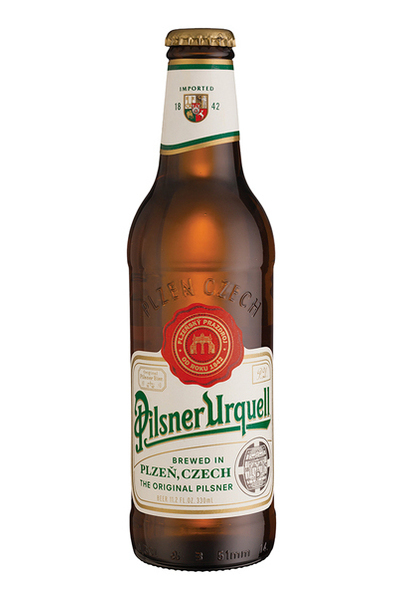
Groll’s genius lay in bringing together, harmoniously, several different ingredients and processes. The malt was perhaps the most important or at least the newest innovation. First Groll selected local Bohemian barley from nearby Morovia. Barley from this region had been carefully cultivated over time and developed to be a high quality barley for brewing beer. Groll then malted this barley using techniques and processes that he had learned from a visit to England; however, he took it even a step further making his malt even lighter than what England, Sedlmayr, and Dreher had produced. Eventually this malt became known simply as “pilsner malt.”
Hops were also carefully selected for the new beer. Groll chose hops from another local place, Žatec, which we now know by its German name “Saaz.“ This hop is one of the original four noble hops and has a delicate, wam, spicy, earthy aroma and flavor and can have floral notes with a soft bitterness.
The last two ingredients were also just as important–water and yeast. The water came from aquifers from the nearby Radbuza river and was very soft–great for brewing the newer pale beers. Ultimately, Groll chose a lager yeast that had been the hallmark of Bavarian beers for a couple of hundred years by this time.
Pilsner’s Global Impact
The pilsner style of lager beer quickly spread throughout Germany and other European countries. Each region put their own spin on the style, but all of them were fairly close in design. Technological advancements were coming fast, which helped to further improve and ultimately spread lagers (especially pilsners) throughout the world.
Significantly, refrigeration was invented by Carl von Linde in 1873 allowing lagers to be brewed anytime of the year. Clear glass became inexpensive and it was used in glassware that showed off the brilliantly bright and golden beer. Transportation became motorized and vast webs of railways allowed pilsners to be transported far and wide.
During the middle to late part of the 1800s, a number of major lager breweries opened. In 1847, Jacob Christian Jacobsen founded the lager brewery Carlsberg Brewery in Copenhagen; Gerard Adriaan Heineken in Amsterdam in 1864 opened Heineken Brewery; in the US in 1855 Frederick Miller established the lager brewery Miller Brewing Company; in Colorado Adolf Coors opened his lager brewery later to become Coors Brewing in 1873; ultimately Eberhard Anheuser opened a lager brewery in St. Louis that would become Anheuser-Bush InBev, the largest brewing conglomerate in the world.
Craft Lager
Unfortunately lager beer (virtually all beer) in America and most of the world gradually became dominated by a single, bland, so-called international pilsner style lager, brewed by just a handful of mega breweries. Several factors contributed to this seachange, but here are just a few: two world wars took place where ingredients were difficult to obtain, resulting in lower alcohol beers (using less ingredients) that were blander (substituting cheaper, less flavorful grains like rice and corn); prohibition wiped out hundreds of breweries as they were unable to stay in business until the 21st Amendment re-legalized beer; a general industrialization and mass commercialization with its attendant marketing of consumer food products; and in order for a particular product such as beer to appeal to the masses it had to lose much of its flavor and distinguishing characteristic resulting in a nearly tasteless, insipid, watery, and low-calorie product.
Craft brewers rebelled against this bland, homogenous beer and made tasty, characterful, distinguishable, beer. However, at first it was nearly all ales that they produced. This was in large part because ales were easier and faster to produce. In addition, nearly all the home brewing books featured ales as the early ones came from Great Britain where the beer scene was markedly different from that in the US and many other places in the world.
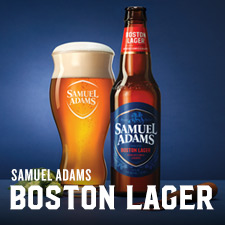
(via samueladams.com)
Nevertheless, near the beginning of craft brewing in the US, a spunky home brewer whose ancestors were brewing beer at least as far back as revolutionary times decided to brew lagers. Jim Koch founded the Boston Beer Company in 1983 and released his flagship lager beer, Samuel Adams Boston Lager in 1985. He based his beer on a recipe from his great- great- grandfather who had been a brewer in St. Louis. He insisted that his Sam Adams lager be brewed according to the Rhineheitsgebot meaning only barley, hops and water be used. And he sought out premium ingredients. Eventually Sam Adams lager became one of the best selling craft beers in the US.
A few other prominent craft breweries began by only brewing lagers. One the most notable at least to us who live near Boston is Jack’s Abby Brewing of Frammingham. Jack Hendler and his two brothers started Jack’s Abby — named for Jack’s wife, Abby — in 2011. Prior to starting Jack’s Abby, Jack had worked in a brewpub in Boston for six years and then spent time in Munich learning how the Germans made lager beer before coming back to Massachusetts to start Jack’s Abby.
Today there is a resurgence of lager brewing in the world of craft beer. Many if not most smaller craft breweries have at least one lager that they brew and it is likely to be a pilsner. Why this interest in lagers? Good question! Originally craft brewers and their customers rebelled against the bland, industrial lagers from the giant brewers. Unfortunately, that generally included all lagers, not just the international pilsner style. Plus there were so many other great beer styles out there that craft brewers could make. Great Britain had numerous styles that were still being made. Belgium is another country that has a wonderful beer culture and history. So there were certainly plenty of ale types for craft brewers and their customers to explore. Not to mention the new styles that American craft brewers were creating themselves such as IPAs — west coast versions and the recent New England style IPAs.
So perhaps in part brewers were running out of new beers to make? Or maybe their taste buds were tiring of the heavily hopped fruity IPAs that were beginning to give them palate fatigue? For whatever reason, lagers are gaining popularity, especially the lighter, paler versions. Nevertheless, this time around these lagers promise to be flavorful and anything but bland.
Mark Bowers is the Brewmaster at Aeronaut. The views and opinions expressed on this web site are solely those of the original author, and they do not necessarily represent those of Aeronaut Brewing Co.
Illustration courtesy of Brit Weidel


